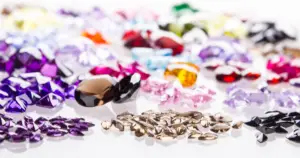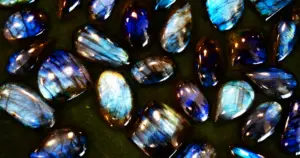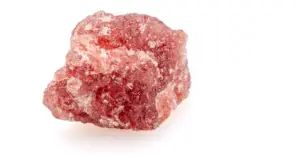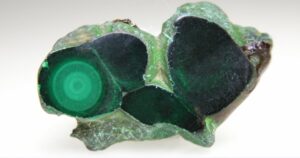Rose Quartz vs Pink Quartz: A Complete Comparative Guide
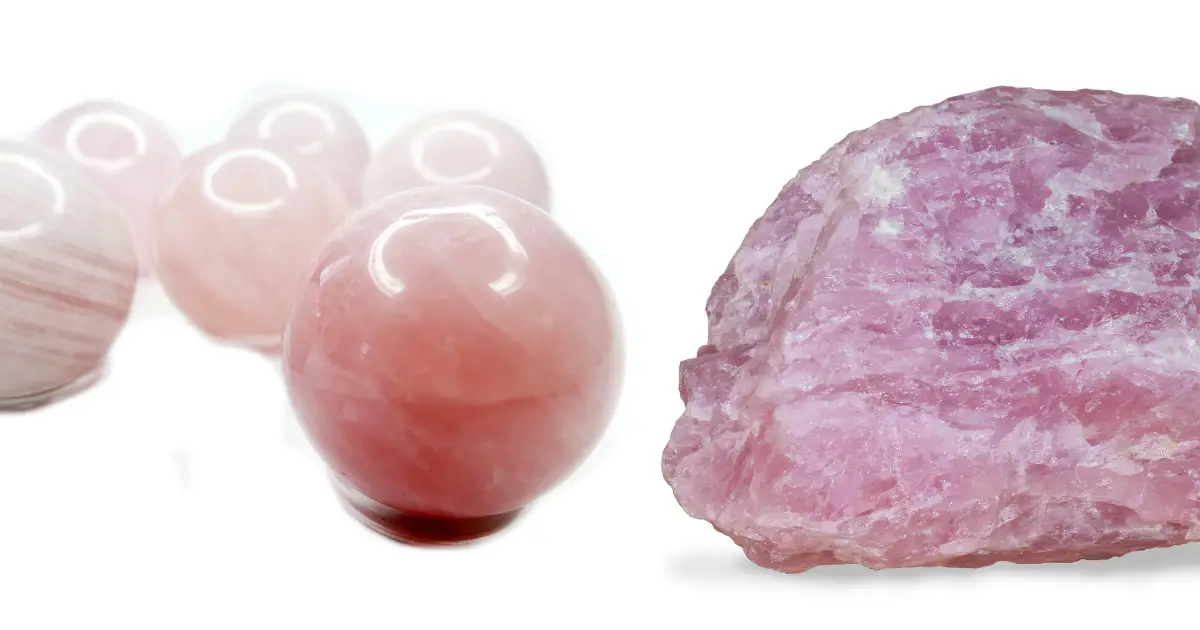
In this post, you will learn about the differences and similarities between rose quartz vs pink quartz.
Rose quartz, one of the most prevalent pink quartzes and among the most beautiful, is a fantastic addition to any gemstone enthusiast’s inventory. Rose quartz is stunning whether in its natural form or refined to perfection.
Suggested Reading: Rose Quartz Meaning: Healing Properties, Benefits and Uses
Table of Contents
Rose Quartz vs Pink Quartz: About the Crystals
-
What is Rose Quartz?
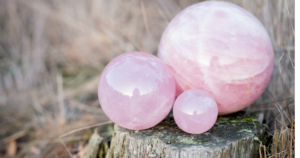
Rose Quartz has a Hexa crystal structure and is often light pink in colour. It is among the most attractive crystals due to its transparent transparency. Rose quartz crystal is also known as Hyaline Quartz in some quarters. It has a feminine sense due to its delicate pink colour and is generally thought of as a light pink quartz crystal.
The Assyrians were the first to use it in jewellery centuries ago, about 800 BC. Many civilizations, such as the Egyptians, Greeks, and even Romans, have documented its use.
People frequently inquire about the rarity of this stone. In fact, this is among the most plentiful sorts of minerals on our planet. It is mined commercially in a number of countries, including Namibia, South Africa, Brazil, Germany, and Madagascar.
Because they are so plentiful, the price of these jewels is usually relatively low. You may effortlessly include the stone into your collection and wear it with a variety of jewellery designs. The most prevalent types of jewellery are earrings, necklaces, and bracelets. Because of its location on a person’s body, it has the most increased healing qualities.
To know all the benefits of Rose Quartz read here.
-
What Is Pink Quartz?
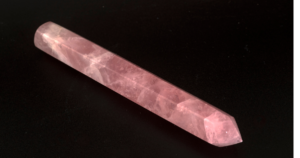
Pink quartz represents compassion and love. It is a gemstone that you must always have close to you for its universal loving powers and capacity to treat a wide range of ailments.
If you can’t keep it near, it’s a good idea to have it someplace widely available so you can refer to it frequently. While many people assume it is just associated with passionate love, it is really associated with many sorts of love, from self-care to family bonding to relationships between companions and spouses. It emphasises a gentle form of love, as well as the healing qualities of speech.
Rose Quartz vs Pink Quartz: Differences and Similarities
Rose Quartz is a blush pink quartz type. Its hue is typically soft, ranging in brightness from very baby pink to moderate pink, and it lacks transparency. It never becomes translucent and does not form a single crystalline. Rose quartz is typically fairly uniformly coloured. Rose quartz is muddy, suggesting the presence of phase 2, pink-coloured fibre inclusions.
Pink quartz refers to quartz single crystals with a similar rose tint. Pink quartz is photo-catalytically unstable, and unlike giant rose quartz, it is exceedingly uncommon. These 2 categories of quartz appear to be of diverse nature premised on their optical physical and chemical properties concentration: the catalyst of their colour is different, pink quartz is light sensitive, whereas rose quartz is not, and both kinds form in different situations, and pink quartz evolves single crystals, whereas rose quartz doesn’t seem to.
Despite intensive research over the last decade, the origin of the rose hue in quartz is still a point of contention. Many probable explanations underlying rose quartz’s hue have been hypothesised, but no agreement has emerged. It has recently been proposed that the hue of rose quartz is caused by fibrous inclusions. Using the more “direct” strategy that was already taken, they decomposed rose quartz from diverse places in hydrofluoric acid and recovered mats of optically homogenous, fine-grained, flaky pink-coloured nanostructures.
The rose-coloured filamentous crystalline inclusions might be a combination of dumortierite and a similar phase. The mineral accounts for just approximately 0.05 to 0.15 per cent of the total weight of rose quartz. When heated over 500°C, the mineral bleaches but does not return to its original hue when irradiated. Hue loss can also be caused by oxidising chemicals, and thermal treatment in a reducing environment will return heated and quickly faded material to its original rose colour.
Suggested Reading: Dumortierite Meaning: Healing Properties, Benefits and Uses
Experiments further reveal that the implanted mineral fibres are not orientated randomly but preferentially along specified crystallographic axes. Rose quartz gets its hue from pink-coloured fibre inclusions.
Pink quartz gets its colour from tiny quantities of aluminium, Al(+3), and phosphorus, P(+5) that are formed and paired into the crystalline structure to replace Si(+4), followed by high energy irradiation. One AlO4- and one PO4+ group substitute for the 2 electrically balanced SiO4 units. Pink quartz is frequently associated with phosphate minerals such as (Mn, Fe)Al[(OH)2|PO4]•H2O. Pink quartz is often transparent to translucent. Pink quartz is extremely light-sensitive and will fade fast in bright sunshine.
This indicates that the colour is caused by colour centres, the development of which appears to be driven by high-energy radiation.
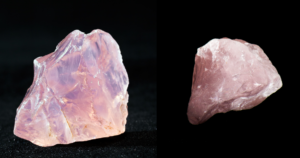
Rose quartz may be found in numerous pegmatite places across the world. It is mined extensively in South Africa, Madagascar, Namibia, the United States of America (South Dakota), and Brazil (Bahia and Minas Gerais). South Dakota and Madagascar are two places where you may find star rose quartz. Pink quartz was discovered in Brazil in 1959, and it is still the primary source.
Pink Quartz is a very uncommon single crystal that is commonly cut into gemstone beads for rings and pendants. Rose Quartz is a low-cost gemstone that is used in a variety of jewellery.
Rose Quartz is most commonly used as beads of various forms, such as rounds, coins, pillows, cubes, ovals, squares, tubes, and so on. You may even design your own unique piece of Rose Quartz jewellery with Rose Quartz beads in your chosen colour and form, and with lots of possibilities to modify to meet your particular taste. There are many low-cost Rose Quartz beads accessible through internet stores, so start your design with reduced Rose Quartz beads.
Pink Quartz jewellery must not be worn when sunbathing due to the fact that it might lose its colour. Rose Quartz may be damaged by high temperatures.
Rose Quartz vs Pink Quartz: Benefits
-
What is Pink Quartz good for?
Rose quartz’s therapeutic powers are commonly associated with joy, abundance, love, and vitality. It can protect against heart attacks and atherosclerosis. It helps to ensure that your muscles are as strong and easy as possible by growing and boosting your circulatory system.
Throughout history, pregnant women have been known to use rose quartz during their deliveries. People believe that the pink crystal may protect both the unborn baby and the mother during the nine months of pregnancy.
It’s because this gemstone is connected with powerful feminine energy. It promotes the free flow of loving energy and is also believed to strengthen the bonding between a mother and her kid.
-
What is Rose Quartz Good for?
Rose Quartz helps individuals who wish to split open their hearts in a healthy way by keeping them open and protected at the same time. This is a gemstone that teaches profound compassion, self-mothering, and the peace that mending may offer. The heart chakra is one of the most essential chakras to align because it teaches us to trust, offer, and embrace the world in all its wonderful magnificence.
Conclusion
Both Rose Quartz and Pink Quartz might be beautifully pink in colour, but they have their own unique set of properties and benefits. Hope this article has made you understand the Rose Quartz vs Pink Quartz differences and similarities in a better way.
